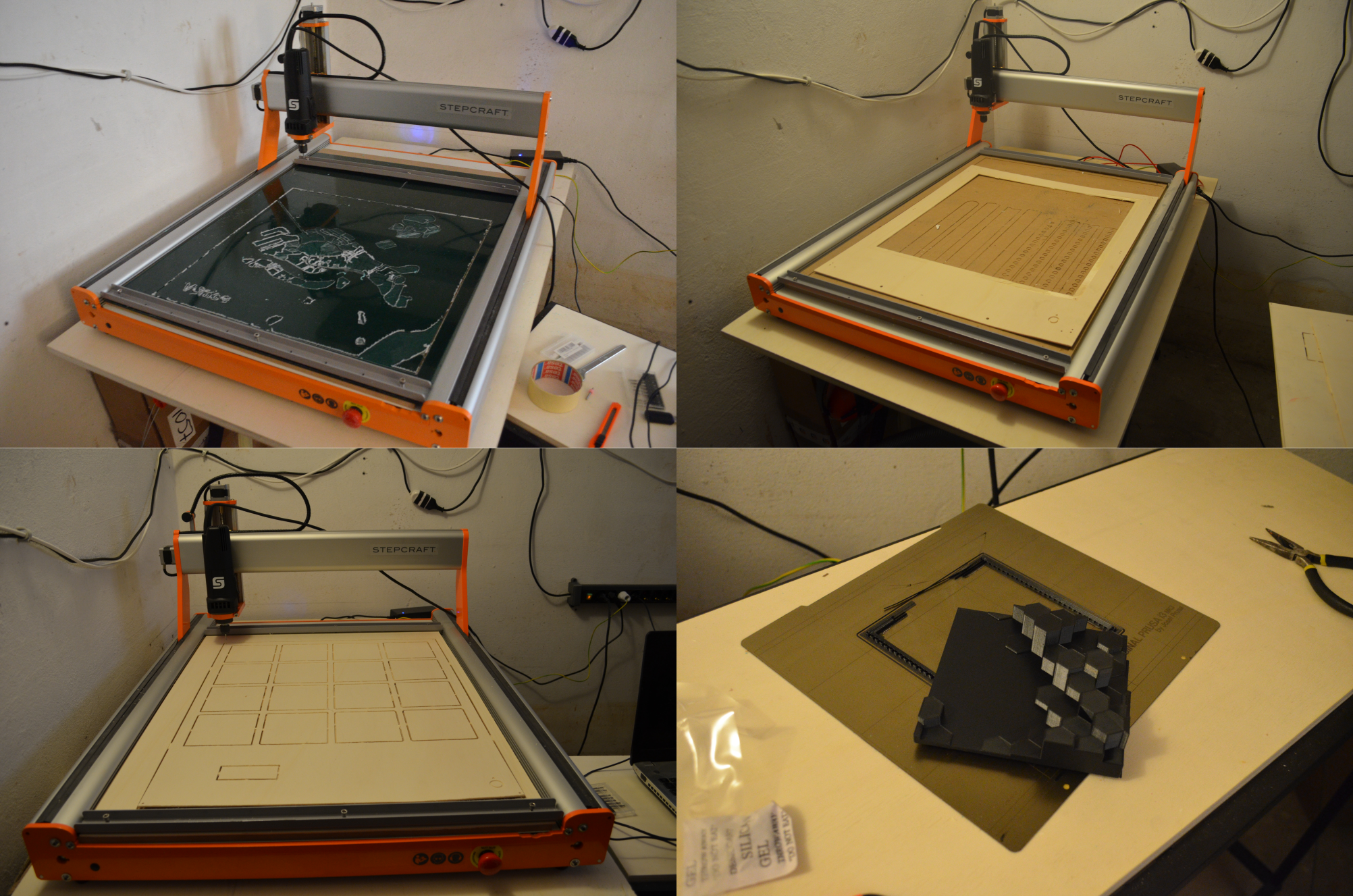Fabrication · 3D Data Map

In this phase of your project you will transform your 3D digital model into a physical object. Generally speaking, this process consists of two main steps: one of pre-production, where you create a file (GCode) with the instructions the machine need to operate; and the second, where the actual building takes place.
In line with this, the tutorial for this part of the project is broken into two sections. The first on guides you into how to create the GCode files needed and has 5 sub-sections, one for each unique object: the base map, the support frame for the base map, the 3D data layer, the support grid for the 3D data layer and the legend. The second part walks you through the steps needed to actually fabricate the objects with the CNC milling machine and the 3D printer. This section is divided into two parts. One is about the CNC milling machine, used for the plexiglas base map, the wooden support frame for the base map and the wooden support grid for the 3D data layers. The other part deals with the 3D printer, and walks you through the steps needed to 3D print the 3D data layers and the legend.
For the fabrication part of the project, it is advised that you first contact the person who will operate the machines to produce the output. This because every machine has its own specs, capabilities, and possibly even software, so you want to double check that you are proceeding in the right direction before you actually send the files to the machines. The tutorials of this paragraph show the workflow that works for the specific machines used to produce the prototype, a Stepcraft 2/800 (CNC milling machine) and a Prusa i3 mk3 (desktop 3D printer).
The section that regards the actual fabrication with a CNC is included solely to educate on how such machines work. We absolutely don’t advise you to follow this part of the tutorial on your own, unless you have previous experience with operating a CNC milling machine, which comes with some safety concerns and necessary technical setup prior to each operation.

